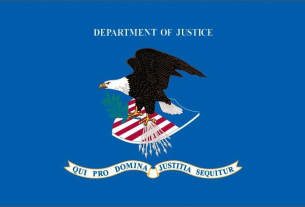By Ottilia Anna Maunganidze*
Regional integration is key for Africa’s prosperity. A continental economic community where goods, services and people move freely can help address the continent’s developmental challenges and realise the African Union’s (AU) Agenda 2063 aspirations. Mobility is thus intertwined with trade.
Policies, systems and practices are needed to reduce barriers to access, facilitate people’s freedom of movement, encourage intraregional trade and develop joint strategies. While Africa is on track to achieve free trade, free movement of people is lagging.
In 2018, AU heads of state adopted two complementary instruments. The first was the African Continental Free Trade Area (AfCFTA) agreement. The second was the Protocol to the Treaty Establishing the African Economic Community Relating to Free Movement of Persons, Right of Residence and Right of Establishment (Free Movement Protocol).
Several progressive continental policies strengthen these instruments’ aims – including the Migration Policy Framework for Africa, the Single African Air Transport Market and the AU Strategy for a Better Integrated Border Governance.
The AU hopes that by 2023, people will be able to move freely among member countries by, for example, eliminating visa requirements for intra-African travel. A 2023 target is also set for completing the AfCFTA’s first two phases. Despite understanding that these elements go hand in hand, the pace of ratification and implementation of the instruments remains asymmetrical. States show more political will for trade.
Africa is well on track to achieve the free trade milestone, but free movement is lagging
The United Nations Conference on Trade and Development (UNCTAD) estimates that intra-African exports by the end of 2021 were only 14.4%. Both UNCTAD and the UN Economic Commission for Africa (UNECA) believe the AfCFTA could change this dramatically. UNECA predicts that the AfCFTA could increase exports by 3%, augmenting the value of intra-African trade by between 15% and 25% (US$50 billion and US$70 billion) by 2040.
Informal trade isn’t included in these statistics. In Africa, informal cross-border trade is widespread. For fragile and conflict-affected states it’s particularly significant as formal trade channels may be adversely affected. The former provides traders with a market outside the fragmented and potentially failing domestic market.
Migration also plays a crucial role in Africa’s regional integration agenda by contributing to socio-economic development in countries of both origin and destination. Studies show increased bilateral trade between recipient and origin countries due to the presence of migrants in a country. Establishing links through capital investment, philanthropy, knowledge transfer, and entrepreneurship is crucial, and the diaspora is a critical resource.
Regular migration can also contribute to the development of host countries by providing them with the experience, knowledge and services they need from both skilled and unskilled labour. While the positive impact of migration and trade tends to tilt towards recipient countries, the resultant trade imbalance for origin countries could be rectified through remittances and direct investment.
A further dimension is that under the AfCFTA, African countries must give each other progressively better access to services within their markets. In 2018, African member states agreed on five priority services as the starting point for engagement: financial services, communication, transport, tourism and business services. By September 2022, initial offers on the trade in services had been received from 43 countries. Africa is therefore on course to finalising this essential element of the process.
Studies show increased bilateral trade between countries due to the presence of migrants
The AU’s Migration Policy Framework and the African Common Position on Migration and Development clearly state that Africa can advance economic development through better migration management and governance. For the AU, member states and regional economic communities (RECs) should formulate policies that use migration for development.
While the Free Movement Protocol is a continental agreement, its effective governance and implementation are national and regional. Already many African countries have participated through RECs in freedom of movement declarations and know the responsibility that comes with freedom of mobility. The agreement must be translated and contextualised to consider domestic realities and the long-term strategy of Africa (and its member states).
This includes ways in which its implementation can help build resilience in Africa for unanticipated mobility and support the transition to a borderless continent. It also extends to providing a framework for policy coherence on the digitalisation of civil registers and helping to meet the long-term aspirations of ‘making Africa a home’. Still, progress on ratifying and implementing the protocol is slow – slower than that for the AfCFTA.
African states have been reluctant to adopt the Free Movement Protocol compared to the AfCFTA for four main reasons. First is the concern around mass migration from less developed countries into more developed, middle-income African countries. But this shouldn’t divert attention from the gains that migration brings to recipient countries and how it provides migrants with opportunities for better lives. A differential and gradual streamlining of fiscal and labour market and immigration policies that foster migrant integration is needed.
Second, some states worry about state sovereignty and undocumented migrants and that free movement could propel insecurity. While some of these worries are unfounded, they shouldn’t be overlooked in rolling out the AfCFTA and, eventually, free movement, as they hamper states’ willingness to proceed.
The AfCFTA and the Free Movement Protocol are great potential conduits for long-term development
Third, with COVID-19 having damaged economies, calls to prioritise citizens over migrants have gained momentum. While the AfCFTA promises recovery from the pandemic and rebuilding of Africa’s resilience, the Free Movement Protocol is seen as an impediment.
Fourth, states are encouraged to relent on border regulation and control without robust protective structures. Developing essential infrastructure to ensure that members experience equitable gains from the AfCFTA and the protocol is important. Violent extremism, human trafficking and money laundering are risks for many countries.
Free movement without corresponding regulatory measures to mitigate risks is seen as a challenge rather than an opportunity. Developing a robust digital identification system that allows states to trace people’s mobility efficiently is key.
The AfCFTA and the Free Movement Protocol are great potential conduits for long-term development. Commitment to implementing both frameworks concurrently would yield economic and development gains for Africa. However, the current dissonance between the adoption of the two is symptomatic of the continent’s ongoing policy development and implementation crisis.
States must ramp up their efforts on both fronts. This includes accelerated ratification, adoption and implementation of mobility regime regulations, policies and protocols by the AU and RECs. The Free Movement Protocol is a good start.
*About the author: Ottilia Anna Maunganidze, Head of Special Projects, ISS Pretoria
Source: This article was published by ISS Today



